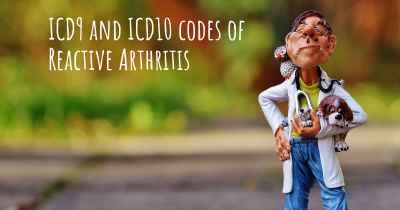What is the history of Reactive Arthritis?
When was Reactive Arthritis discovered? What is the story of this discovery? Was it coincidence or not?

Reactive arthritis, also known as Reiter's syndrome, is a rare but potentially debilitating condition that primarily affects the joints, eyes, and urinary tract. It is classified as an autoimmune disorder, meaning that the body's immune system mistakenly attacks healthy tissues.
Historical Background:
The history of reactive arthritis dates back to the early 20th century when German physician Hans Reiter first described the syndrome in 1916. Reiter's syndrome was initially recognized as a triad of symptoms consisting of urethritis (inflammation of the urethra), conjunctivitis (inflammation of the eyes), and arthritis (inflammation of the joints).
World War II and Post-War Period:
During World War II, a significant number of soldiers developed reactive arthritis after contracting dysentery or other gastrointestinal infections. This led to increased awareness of the condition and its association with certain infections, particularly those caused by bacteria such as Salmonella, Shigella, and Chlamydia trachomatis.
Advancements in Understanding:
In the following decades, researchers made significant advancements in understanding reactive arthritis. They discovered that the condition is triggered by an immune response to an infection in another part of the body, often the gastrointestinal or genitourinary tract. This immune response is believed to be caused by a combination of genetic predisposition and environmental factors.
Identification of HLA-B27:
In the 1970s, scientists identified a strong association between reactive arthritis and the presence of a specific genetic marker called HLA-B27. This marker is found in a significant proportion of individuals with reactive arthritis, as well as other related conditions such as ankylosing spondylitis and psoriatic arthritis. However, it is important to note that not all individuals with HLA-B27 develop reactive arthritis, and the marker is also present in a small percentage of the general population without any symptoms.
Diagnostic Criteria and Classification:
Over time, diagnostic criteria and classification systems for reactive arthritis have been developed to aid in its identification and management. The most widely used criteria are the modified New York criteria, which include clinical features such as arthritis, urethritis, conjunctivitis, and other characteristic symptoms.
Advancements in Treatment:
As our understanding of reactive arthritis has improved, so has the treatment options available. Nonsteroidal anti-inflammatory drugs (NSAIDs) are commonly used to relieve pain and inflammation associated with the condition. In more severe cases, disease-modifying antirheumatic drugs (DMARDs) or biologic agents may be prescribed to suppress the immune system and reduce symptoms.
Current Research and Future Directions:
Ongoing research aims to further elucidate the underlying mechanisms of reactive arthritis and develop more targeted therapies. This includes investigating the role of specific bacteria in triggering the immune response, exploring genetic factors that contribute to disease susceptibility, and evaluating the potential of novel treatment approaches such as immunomodulatory drugs.
Conclusion:
Reactive arthritis has a rich history of scientific discovery and medical advancements. From its initial description by Hans Reiter to the identification of HLA-B27 and the development of diagnostic criteria, our understanding of this condition has come a long way. With ongoing research and continued efforts, we hope to improve the diagnosis, treatment, and ultimately the quality of life for individuals affected by reactive arthritis.








